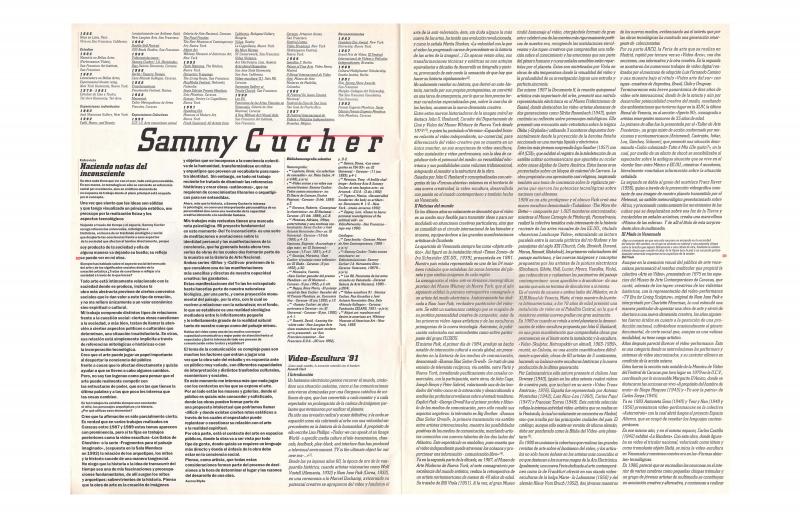The exhibition CCS-10. Arte venezolano actual was one of the most important events ever devoted to conceptual art, non-object-based art, and the use of mixed media and technology in Caracas. Curated by the graphic designer Álvaro Sotillo (b. 1946), the exhibition included ten emerging artists from the 1970s and 1980s who, by 1993 (when the exhibition opened) had already established themselves: Eugenio Espinoza (b. 1950), Sigfredo Chacón (b. 1950), Héctor Fuenmayor (b. 1949), Roberto Obregón (b. 1946), and several others who came into their own later on: Alfred Wenemoser (b. 1954), Sammy Cucher (b. 1958), Meyer Vaisman (b. 1960), Oscar Machado (b. 1953), José Gabriel Fernández (b. 1957), and José Antonio Hernández-Diez (b. 1964).
This interview, conducted by the Venezuelan journalist Aurora Blyde, clearly identifies the features that distinguish Vaisman—who was already well-known in Venezuela—from the other artists who participated in this exhibition. Vaisman settled in New York in the early 1980s and had his first one-man show at the influential Leo Castelli Gallery in 1982. In 1984 he opened his own gallery in the East Village, then settled in Barcelona in the 1990s. As the child of European parents, his work centered on the issue of identity, which made him the major spokesman for the “nomadic nature of contemporary mankind.” In his interview with Blyde, Vaisman talked about the concept of “identity crisis” as well as his own “experience as a displaced person,” and said: “We are all displaced people; all that remains of our sense of identity based on the tribal concept of ethnic and religious purity are a few sad traces.” He nonetheless considers himself a “Venezuelan” artist, as this document attests.
Another interesting moment in the conversation arose when Vaisman discussed the contemporary artist’s key strategies concerning art and the political message it can communicate: “I think art is a terrible medium in which to express political ideas, but at the same time I am painfully aware that everything I do as an artist might be seen as just that. The problem with obviously political art is that it seems redundant. It is like preaching to the choir.”
Regarding Aurora Blyde’s other interviews with artists who participated in the exhibition CCS-10. Arte venezolano actual, see “Jugando a atrapar el espacio [Entrevista con Sigfredo Chacón]” [doc. no. 864412]; “Por la seducción de ver [Entrevista con José Gabriel Fernández]” [doc. no. 864393]; “Para hacerle ofrendas a la muerte [Entrevista con Roberto Obregón]” [doc. no. 1097592]; “De las cenizas petrificadas por el tiempo [Entrevista con Oscar Machado]” [doc. no. 864755]; “Irreflexiones, reflexiones y flexiones [Entrevista con Héctor Fuenmayor]” [doc. no. 864715]; “Haciendo notas del inconsciente [Entrevista con Sammy Cucher]” [doc. no. 864676]; “Entre el orden histórico y el caos emocional [Entrevista con Eugenio Espinoza]” [doc. no. 864696]; and “En la búsqueda, pero sin querer buscar [Entrevista con José Antonio Hernández-Diez]” [doc. no. 864736].








